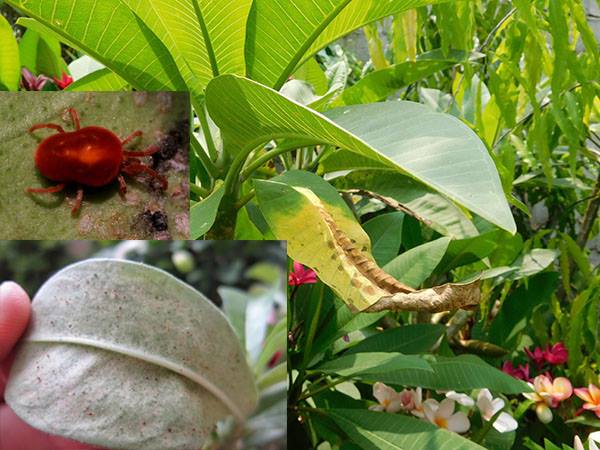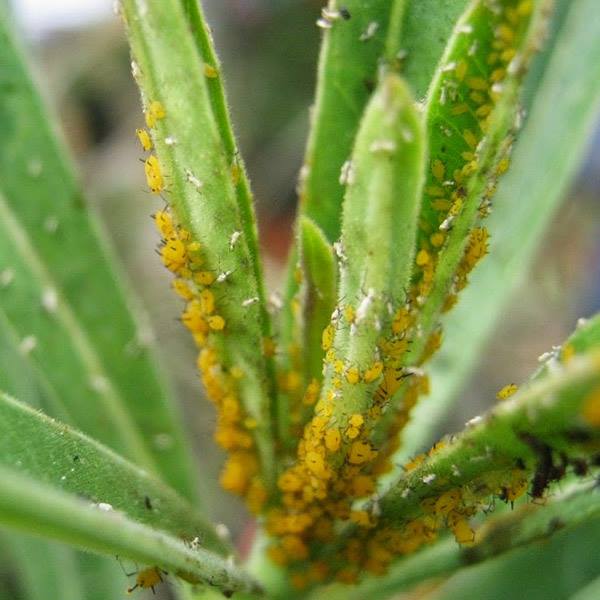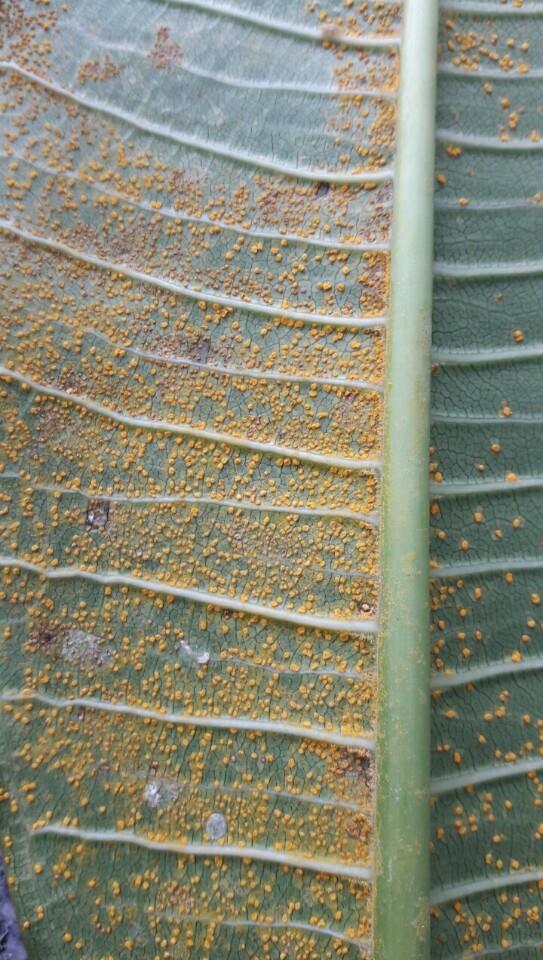Pests and diseases on Plumeria and workarounds
1-THE TREE'S LEAVES ARE YELLOWING, THE LEAVES FALL OFF IF YOU TOUCH THEM LIGHTLY
This disease is caused by red spiders. Red spiders are very difficult to detect and very difficult to destroy. They often appear on frangipani trees at the time of changing seasons (sun and rain); the size of red spiders is very small, you have to observe carefully to detect; in addition, they often hide under the leaf surface.
Red spiders cause the most damage to the frangipani tree. They will cling to the leaves and suck the sap, causing the leaves to turn yellow. During the rainy season, if the frangipani tree loses its leaves, it will lead to reduced water drainage through the leaves, which can easily cause the roots to rot.

* SOLUTION:
- Use Alfamite 15EC or Admire 050EC, add adhesive to prolong the effect of the drug. Spray the drug early in the morning or late in the afternoon.
Note: spray thoroughly under the leaves. Spray around the base. Red spiders are very contagious and spread very quickly. Therefore, spray all surrounding plants, or spray the whole garden if possible. After 3 days, spray again like that to prevent. Red spiders can be prevented by spraying periodically every 10-15 days.
2- TREE ATTACKED BY YELLOW SPIDER
This type of pest is easy to detect, they often cling to the top of the branches of the porcelain. When first detected, you can use a brush to clean it. If the tree is heavily infected, you can use insecticide (Karate 2.5 EC). Or use chlorophyll insecticide to spray early in the morning or late in the afternoon. A few days after spraying, the yellow spider will turn black, so spray again to completely eliminate it. Spray periodically every 10-15 days for prevention.

3- RUST DISEASE ON TREE
Rust disease (rust) has the scientific name: Uromyces appendiculatus.
* Symptoms:
Small, pale yellow round spots appear on the underside of the leaves, which gradually grow larger, with an average diameter of 2-3 mm. The surface of the lesions is covered with a layer of orange-yellow powder, which are fungal spores. Gradually, these spores disappear and leave brown lesions on the leaves like they were burned. On a leaf, there are many disease spots, some of which connect to form large disease spots. Leaves turn yellow, fall off in large numbers, branches dry up, and plants grow poorly.
* Pathogen
Caused by the fungus Uromyces appendiculatus.
* Laws of development and growth:
Fungal spores spread in the air, on the remaining diseased plant debris, in conditions of high humidity and suitable temperature (18-210C), the disease develops strongly.

* SOLUTION:
- Collect and burn diseased leaf residues. Clean the garden, create ventilation, and fertilize the plants in a balanced manner for strong, healthy plants. Spray preventive drugs such as Lunasa, Funguran, Score...
- When the disease occurs, you can use one of the following drugs: Viben C, Bayfidan 25EC or 250EC; Bamper 250EC; Anvil 5SC; Sumi-Eight 12.5 WP... to spray. After spraying, you should increase fertilization and water enough to help the plants recover quickly..

